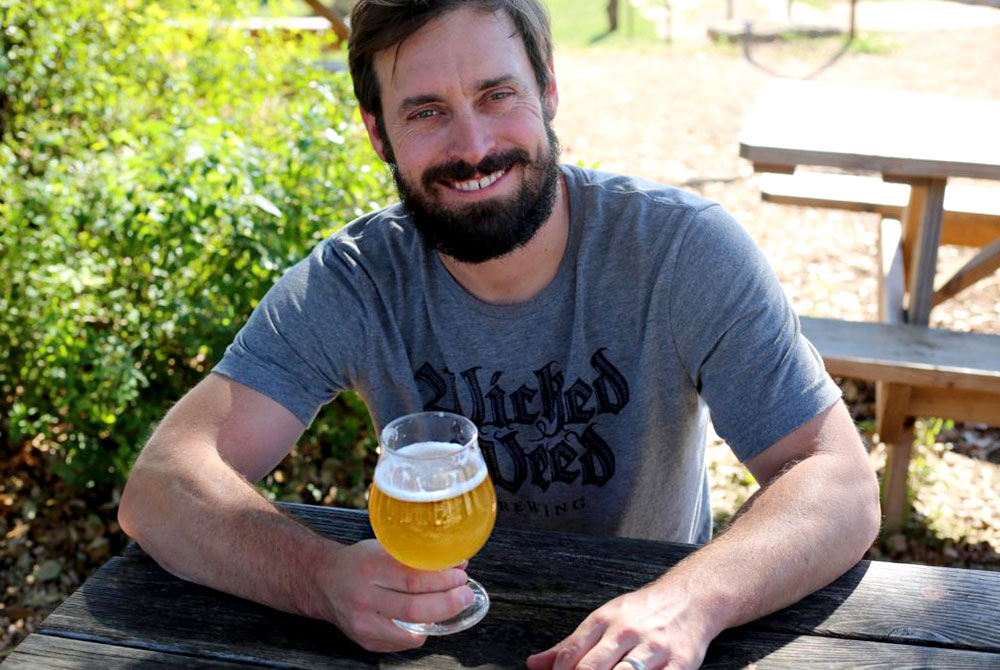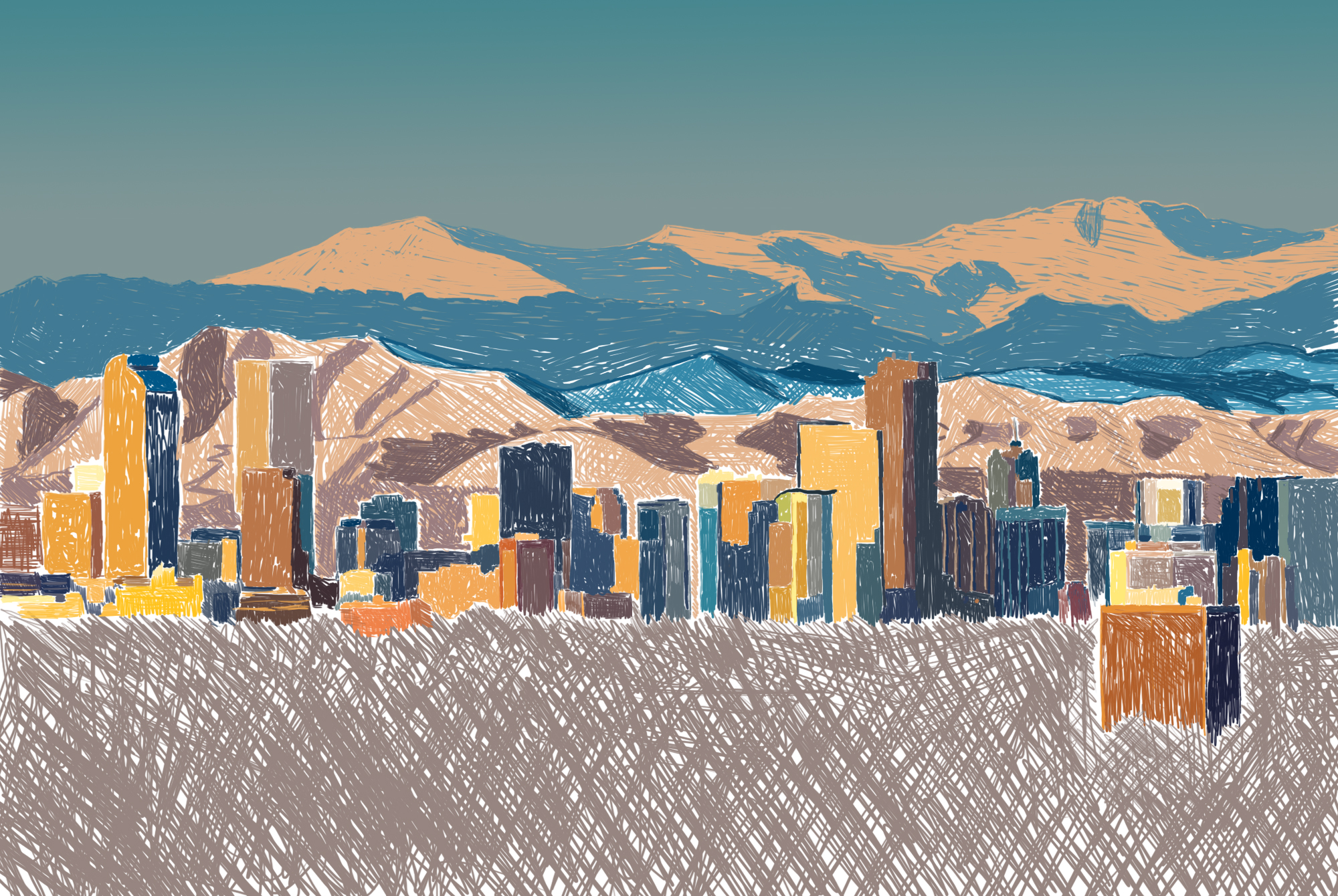Things we learned:
- Jester King Brewery cofounder Jeffrey Stuffings holds a law degree from Boston College
- The name Jester King comes from King Lear
- All Jester King beer gets made with local water, which contributes minerality
- Historically, children drank low-alcohol table beer because it was safer than water
- Jester King has several secret climbing walls (for employees only)
So a lawyer moves to central Texas to open a brewery…
It sounds like the start of a bad joke. If you drive about 20 miles due west of Austin, down a long country road that splits off from US Highway 290, you’ll find Jester King, a brewery known for its farmhouse and wild ales, as well as a Texas-sized bottle list. Originally built on four acres of leased land in 2010, the brewery now occupies 60 acres, which also play home to climbing walls, a growing farm, and Stanley’s Farmhouse Pizza. On a sunny central Texas afternoon, Hop Culture sat down with head brewer and Jester King cofounder Jeffrey Stuffings to talk law, loquats, and local agriculture.
Kenny Gould: How did you end up in rural Texas?
Jeffrey Stuffings: I was a government major at Notre Dame, and then I decided to go to law school in Boston at Boston College—another Catholic school, and another ACC school. After I graduated, my wife and I moved down here to be closer to my wife’s family. I was homebrewing at the time and ultimately got disaffected to the legal world and wanted to move on. I started working on Jester King in 2007. Right when we were about to start raising money and building the brewery, I realized that I was going to need some help, especially as it related to engineering, science, and technology, which I have zero skills in. My brother, Michael Stuffings, who actually has some good mechanical engineering skills, came down to help me build the brewery. The two of us got this place open in 2010.
KG: You have quite a place here.
JS: We really lucked into this location. I got a call out of the blue from this rancher who said, “How’d you like to build your brewery out here on this ranch?” We said, “Sure.” Originally we had a lease on four acres, but about a year ago we were able to purchase a good chunk of this ranch. Now the brewery owns about 60 acres, basically as far as the eye can see. We’ve used the land so far to do some small-scale farming, got a little orchard up the way. Over time, we plan to continue to develop it into more of a working farm.
KG: Was your brother in Texas when you asked him to help you?
JS: He was in Chicago.
KG: Was that a tough sell?
JS: Not really. He was a physics major at the University of Chicago and ended up going to work for a bank, and this was 2007…
KG: Oh, good timing.
JS: He was ready to get out of banking. I don’t think he loved it. He wanted something more tangible, something brick and mortar, something less fuzzy.
KG: Like beer. Where’s the name Jester King come from?
JS: The name itself is actually a reference from King Lear. The “Jester King” was the wise fool who existed outside of the mainstream bounds or authority of the crown and was able to poke fun at authority without being executed. We felt it was a good analogy for our role in the craft beer world.
KG: Is that the ethos of the brewery?
JS: I would say so. Though many things we do are very traditional. Our approach really stems from both the American and Franco-Belgian farmhouse traditions — really just any place where beer is tied to a time or place. That’s our driving force. A lot of our processes are super traditional, but we do them with what’s around us: well water, local grains, oftentimes aged hops, and native microflora.
KG: Does using local products like that make Jester King beer a unique expression of place and time?
JS: Yeah. In terms of place, we use what’s around us, and use it in as close to an unadulterated form as possible. Our water is raw Trinity Aquifer, Hill Country well water. We don’t add salts and we don’t take salts away. It’s pretty hard water.
KG: And the malts and hops?
JS: When we started, our only option was to get malted barley from half a continent away, but now we’re getting local malts. Not one hundred percent, but a large portion of our malt is grown and malted in central Texas. We work with farmers in the region to grow barley and wheat, and then it gets malted at Blacklands Malt, one of the only micro-maltsters in Texas. They’re like a 45-minute drive north of here. Hops we can’t find locally, but we do age a portion of the hops here at the brewery. We take bright, fresh, green hops and put them in burlap bags and let them sit in the attic of the horse barn for a while. It’s hard to say whether that absorbs the sense of place but perhaps there’s a connection.
KG: And the yeast.
JS: Most importantly, all of our beer is either spontaneously fermented or created using mixed culture fermentation, which we put together with yeast capture experiments. Basically, we just went around the fields and found what was growing there, harvested it, and put it in yeast starters. We’ve had that mixed culture going like a sourdough starter for almost four years. It’s reached somewhat of a symbiosis where we don’t see massive swings from batch to batch, but there’s always variability in working with a plethora of microbes.
KG: So Jester King really is an expression of central Texas.
JS: Let me add one more element: we’re also working with fruits, vegetables, herbs, and spices that we get right in this region, especially fruit. We get a lot of local fruit in this region: local peaches, local grapes, plums, loquats, strawberries, blueberries.
KG: That makes sense. So how is Jester King beer also an expression of time?
JS: Time is a very defining characteristic of farmhouse ale. We don’t have a brewing schedule that’s the same year-round. There are certain beers that we can only make during certain times of the year. For instance, we can only make spontaneous fermentation beers during the cold parts of the year because we need cool nights to chill down the wort. Farmhouse ales that have less of an acid profile and are more yeast driven, as opposed to bacteria driven—we can only make those during the hot months, because if the temperatures drop into the 50s or 60s, we can’t maintain fermentation temperature. Our building isn’t insulated. Also, there’s the balance of microbes in the air. The microbes you get in the winter favor slow fermentations that are more acid driven, while in the summer they’re more fruit forward and less acidic, more ester-y.
KG: Can you talk about this beer?
JS: This is Petit Prince, our table beer. I love the historical story of table beer as being something that both adults and children would drink when water supplies were untrustworthy and could make people sick. At the time, I’m sure they had no understanding of microbiology, but nonetheless, wort had been boiled and any harmful microbes had been killed off. This beer is really simple, a clear expression of time and place: it uses well water, local grains, fresh hops, and mixed culture fermentation. It’s only 2.9 percent alcohol. Extremely dry, finishes at zero Plato.
KG: Who does the art for your bottles?
JS: His name is Josh Cockrell, and he was our first employee. He does all the art, all the naming—everything visual about the brewery and the beer is his creation.
KG: Is he an artist by trade?
JS: Yes. Originally we said, “We’ll pay you for that artwork and that’ll be it,” but he said, “No, I really want to work for the brewery.” And I said, “Okay, but we can’t hire you just to do art.” So he worked in the tasting room, helped deliver beer, and helped with construction projects around the brewery. He did everything for a while.
KG: What has been the biggest surprise for you in starting a brewery?
JS: I came into it with the mindset that making good beer was going to be the challenge. That had its difficulties, but one thing I’ve come to learn is that at this point, making beer is the easy and fun part. I find that the biggest challenge in running a business is managing people. Although I wasn’t a professional brewer, I approached opening a brewery from the beer-making side. But that’s only a small part of it. Running a business is massively complex and difficult even for a small business like us. Getting people to work well and efficiently. We’re not some efficient factory brewing 14 times per day, but nonetheless, we still have issues of organization, structure, positivity, and happiness.
KG: Do you have any hobbies outside of beer?
JS: I like to rock climb. I’m not very good, but it’s fun. Growing up, I played basketball, but finding time and finding other people to play is a challenge. In rock climbing, and especially in bouldering, you don’t need any gear—a mat, maybe. You can do it by yourself. It’s fun to climb with people but if you’ve got an hour, you can do it.
KG: Any good places to climb around here?
JS: There’s a place called Reimers Ranch which is close by. We’ve also built a couple of climbing walls around the brewery area.
KG: Is that for employee use or can people go find those?
JS: [laughs] Just employee use.
KG: Thank you for your time.


